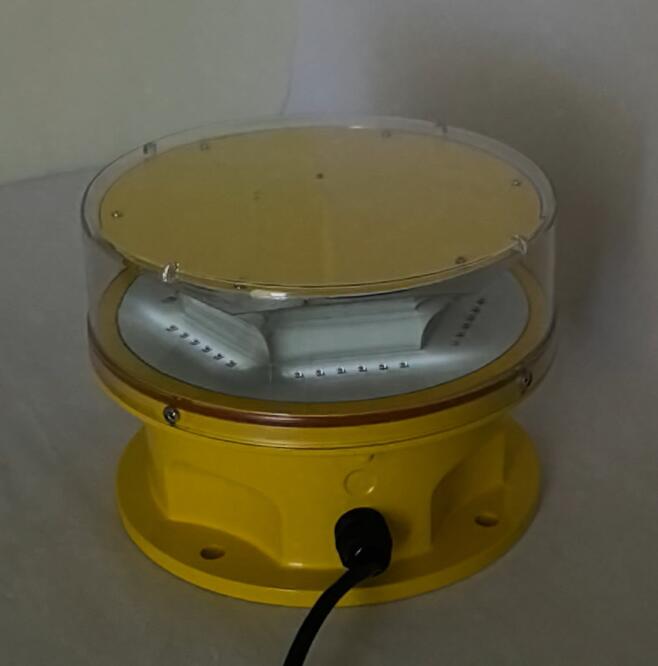Tower Obstruction Lighting: Safeguarding the Skies Above
In the realm of aviation safety, tower obstruction lighting stands as a silent yet indispensable guardian. These specialized lighting systems are designed to mark tall structures, such as communication towers, wind turbines, and skyscrapers, ensuring they are visible to pilots and preventing potential collisions. As air traffic continues to grow and urban landscapes become increasingly vertical, the role of tower obstruction lighting has never been more critical. This article explores the importance, functionality, and advancements of tower obstruction lighting in modern aviation.
The Purpose of Tower Obstruction Lighting
Tower obstruction lighting serves a singular but vital purpose: to make tall structures visible to aircraft, particularly during nighttime or in conditions of reduced visibility such as fog, rain, or snow. Without these lights, pilots would struggle to identify potential hazards, increasing the risk of catastrophic collisions. By illuminating towers and other tall structures, obstruction lighting ensures that pilots can navigate safely, even in the most challenging conditions.
Types of Tower Obstruction Lighting
Tower obstruction lighting systems are categorized based on their intensity and application. The choice of lighting depends on the height of the structure and its location relative to air traffic routes. The main types include:
Low-Intensity Obstruction Lights: These are typically used on structures less than 45 meters tall. They emit a steady red light and are commonly found on smaller towers or buildings in areas with low air traffic density.
Medium-Intensity Obstruction Lights: These lights are used on structures between 45 and 150 meters tall. They can emit either a steady red light or a flashing white light, depending on the specific requirements of the location. Medium-intensity lights are often used in urban areas where air traffic is more frequent.

High-Intensity Obstruction Lights: Reserved for structures exceeding 150 meters in height, these lights emit a powerful flashing white light. They are designed to be visible from great distances, ensuring that pilots can spot and avoid the structure even in poor visibility conditions.
| Tower obstruction lighting |
Regulatory Standards for Tower Obstruction Lighting
The installation and maintenance of tower obstruction lighting are governed by stringent regulatory standards to ensure uniformity and effectiveness. In the United States, the Federal Aviation Administration (FAA) sets the guidelines for obstruction lighting, including specifications for light intensity, color, and placement. Similar regulations exist globally, with organizations such as the International Civil Aviation Organization (ICAO) providing international standards.
Compliance with these regulations is mandatory. Failure to install or maintain proper tower obstruction lighting can result in severe penalties, including fines and legal action. More importantly, non-compliance jeopardizes the safety of aircraft and their passengers, making adherence to these standards a top priority for tower operators.
| Tower obstruction lighting system |
Technological Innovations in Tower Obstruction Lighting
Advancements in technology have significantly enhanced the effectiveness and efficiency of tower obstruction lighting. One of the most notable developments is the adoption of LED technology. LED lights offer numerous advantages over traditional incandescent bulbs, including:
Energy Efficiency: LEDs consume significantly less power, reducing operational costs and environmental impact.
Durability: LED lights have a longer lifespan, requiring less frequent maintenance and replacement.
Brightness: LEDs provide brighter and more consistent illumination, improving visibility for pilots.
Another innovation is the integration of remote monitoring systems. These systems allow operators to monitor the status of obstruction lights in real-time, ensuring that any malfunctions are quickly detected and addressed. This is particularly valuable for towers located in remote or hard-to-reach areas, where manual inspections may be infrequent.
The Role of Tower Obstruction Lighting in Urbanization
As cities continue to expand vertically, the number of tall structures is increasing rapidly. Skyscrapers, communication towers, and wind farms are becoming common features of urban and rural landscapes alike. This growth underscores the importance of tower obstruction lighting in maintaining aviation safety.
In densely populated urban areas, where air traffic is often concentrated, tower obstruction lighting plays a critical role in preventing collisions. For example, helipads on skyscrapers rely on obstruction lighting to guide helicopters safely during takeoff and landing. Similarly, wind farms, often located in open areas, use obstruction lighting to ensure that turbines do not pose a hazard to low-flying aircraft.
Challenges and Future Directions
Despite their importance, tower obstruction lighting systems face several challenges. One issue is light pollution, which can affect nearby communities and wildlife. To address this, researchers are exploring ways to minimize the impact of obstruction lighting while maintaining its effectiveness. For instance, directional lighting and adaptive systems that adjust brightness based on ambient conditions are being tested.
Another challenge is the integration of tower obstruction lighting with emerging technologies such as drones and autonomous aircraft. As these technologies become more prevalent, obstruction lighting systems may need to evolve to accommodate new types of air traffic.
Looking ahead, the future of tower obstruction lighting lies in smart systems that can communicate with aircraft and air traffic control. These systems could provide real-time data on lighting status, weather conditions, and potential hazards, further enhancing aviation safety.
Tower obstruction lighting is a cornerstone of aviation safety, ensuring that tall structures are visible to pilots and preventing collisions in an increasingly crowded airspace. From low-intensity red lights to high-intensity flashing beacons, these systems play a vital role in safeguarding the skies above. As technology continues to advance, tower obstruction lighting will evolve, becoming more efficient, sustainable, and integrated with the broader aviation ecosystem.
In a world where the skies are shared by countless aircraft, tower obstruction lighting serves as a silent sentinel, guiding pilots safely through the night and ensuring that the skies remain a safe and navigable space for all.
